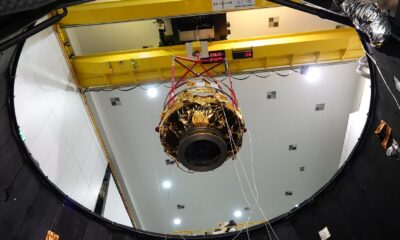Science
New Study Reveals How Nickel and Urea Delayed Earth’s Oxygen Surge

The Great Oxidation Event, which occurred between 2.1 and 2.4 billion years ago, marked a pivotal moment in Earth’s history. This period transformed the planet’s atmosphere, enabling the rise of complex life forms. Surprisingly, oxygen-producing cyanobacteria had evolved hundreds of millions of years prior, yet the concentration of oxygen in the atmosphere remained low for an extended duration. A recent study from Okayama University in Japan sheds light on this ancient enigma, identifying two unexpected factors—nickel and urea—as significant contributors to the delay.
Led by Dr. Dilan Ratnayake, the research team conducted a two-part experimental investigation to explore the factors that limited cyanobacterial populations during the Archean period, which spanned from approximately 4 to 2.5 billion years ago. In their first experiment, the scientists tested whether urea, a crucial nitrogen source for life, could form abiotically under conditions resembling those of early Earth. They exposed mixtures of ammonium, cyanide, and iron compounds to intense ultraviolet radiation, simulating the harsh environment that existed before the protective ozone layer developed.
The results confirmed that urea could indeed form without biological processes in these primordial conditions. This finding is critical as it indicates that essential nutrients for life may have been available even before the advent of living organisms.
In the second phase of the study, the researchers grew cultures of synechococcus cyanobacteria under controlled light-dark cycles that reflected early Earth conditions. They varied the concentrations of urea and nickel in the growth media. The findings revealed an unexpected result: while cyanobacteria require these substances for nutrition, high concentrations of both actually inhibited their growth and prevented the large blooms necessary to significantly elevate atmospheric oxygen levels.
Nickel, in particular, has a complex relationship with urea. It is essential for the enzyme urease, which converts urea into ammonia that cyanobacteria can utilize. Conversely, nickel also plays a role in the formation of urea through biological processes. When elevated levels of both nickel and urea were present in the early Archean oceans, they created a biogeochemical bottleneck, limiting the growth and longevity of cyanobacterial populations.
The researchers propose that as geological processes gradually diminished the concentrations of nickel and urea over hundreds of millions of years, cyanobacteria were finally able to thrive. This sustained expansion of oxygen-producing microbes eventually triggered the Great Oxidation Event, fundamentally altering Earth’s chemistry and paving the way for the evolution of complex, oxygen-breathing organisms.
These findings illustrate that significant environmental changes on Earth are often the result of intricate transformations between inorganic and organic compounds. The study highlights how even seemingly unremarkable elements, like nickel and urea, can play a crucial role in shaping the planet’s history.
The team’s research contributes valuable insights into the conditions that allowed for the proliferation of life and the subsequent increase in atmospheric oxygen, which remains essential for the survival of many organisms today. The results underscore the delicate balance of elements and the importance of understanding Earth’s early environmental conditions to appreciate the complexity of life as we know it.
-

 Technology4 months ago
Technology4 months agoDiscover the Top 10 Calorie Counting Apps of 2025
-

 Health2 months ago
Health2 months agoBella Hadid Shares Health Update After Treatment for Lyme Disease
-

 Health3 months ago
Health3 months agoErin Bates Shares Recovery Update Following Sepsis Complications
-

 Technology3 weeks ago
Technology3 weeks agoDiscover 2025’s Top GPUs for Exceptional 4K Gaming Performance
-

 Technology2 months ago
Technology2 months agoElectric Moto Influencer Surronster Arrested in Tijuana
-

 Technology4 months ago
Technology4 months agoDiscover How to Reverse Image Search Using ChatGPT Effortlessly
-

 Technology4 months ago
Technology4 months agoMeta Initiates $60B AI Data Center Expansion, Starting in Ohio
-

 Technology4 months ago
Technology4 months agoRecovering a Suspended TikTok Account: A Step-by-Step Guide
-

 Health4 months ago
Health4 months agoTested: Rab Firewall Mountain Jacket Survives Harsh Conditions
-

 Lifestyle4 months ago
Lifestyle4 months agoBelton Family Reunites After Daughter Survives Hill Country Floods
-

 Technology3 months ago
Technology3 months agoUncovering the Top Five Most Challenging Motorcycles to Ride
-

 Technology4 weeks ago
Technology4 weeks agoDiscover the Best Wireless Earbuds for Every Lifestyle




















